Abstract
Pigeons pecked two keys in a probability matching situation in which four two-peck sequences were intermittently reinforced: left-left, left-right, right-left and right-right. In Phase 1, relative reinforcement rate was varied with respect to the first response of a sequence: reinforcers were differentially assigned for left-left and left-right sequences as opposed to right-left and right-right sequences. The second response of reinforced sequences occurred equally on the left and right keys across conditions. In Phase II, relative reinforcement rate was varied for sequences that involve an alternation as opposed to those that did not. The relative outputs of the different sequences matched the relative reinforcement rates for the different sequences in both phases. Relative response rates for key pecks did not always match relative reinforcement rates. The intertrial interval separating responses was varied in both phases; increases in the intertrial interval affected the relative frequency of different sequences. The results demonstrate that response sequences acted as functional units influencing choice and thus support a structural account of choice. At the same time, the matching of relative sequence proportion and relative reinforcement rate supports a matching account.
Full text
PDF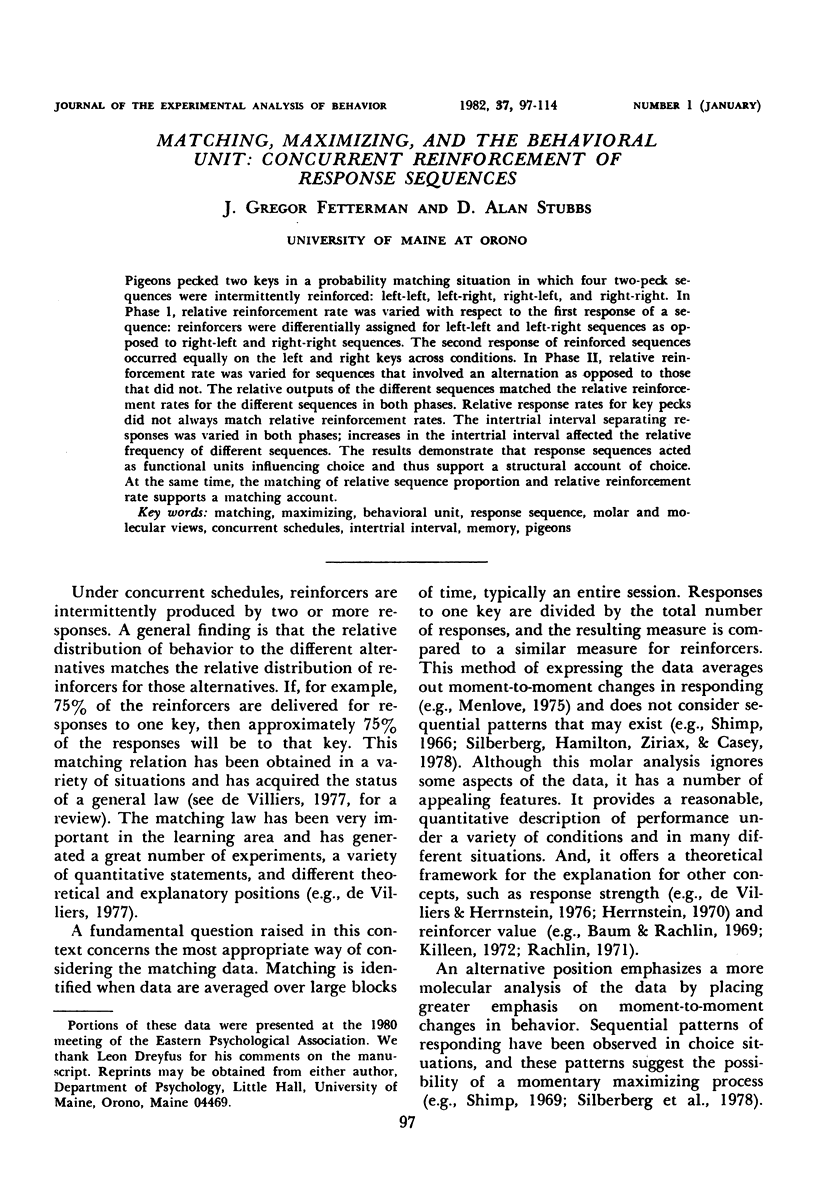
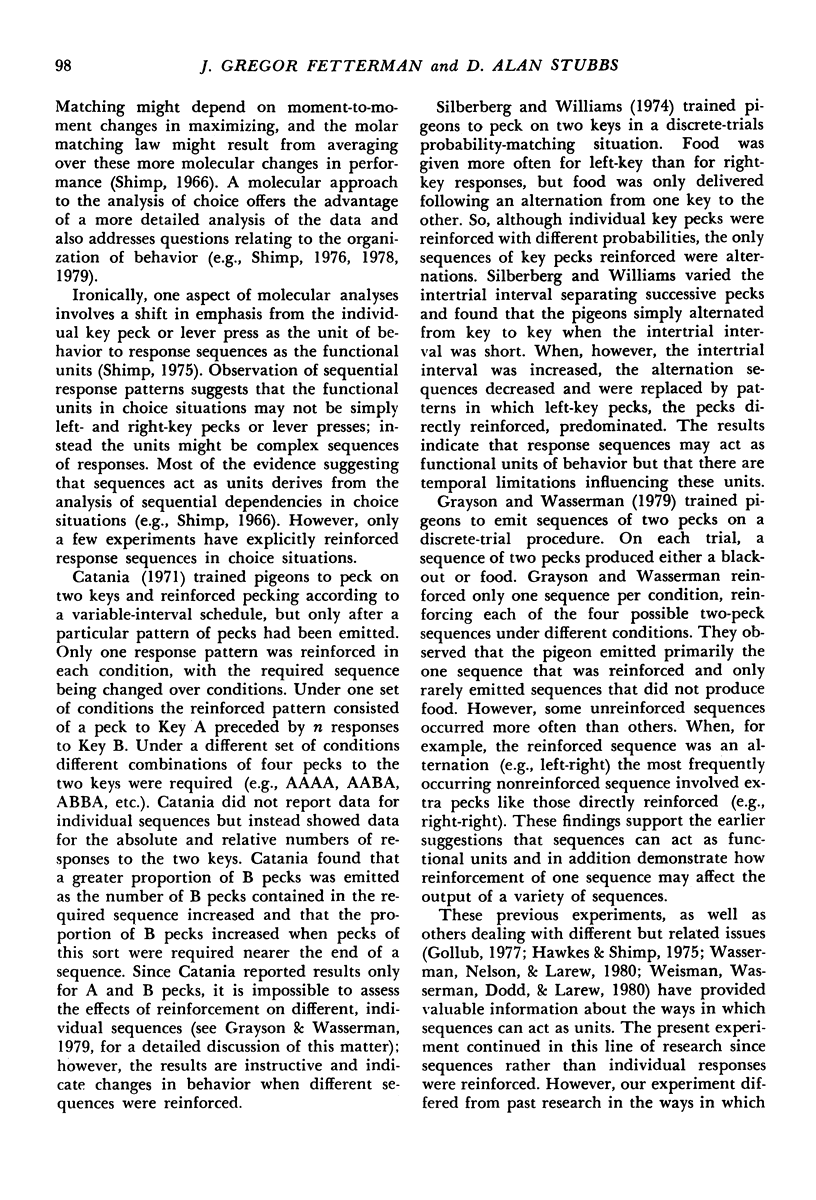
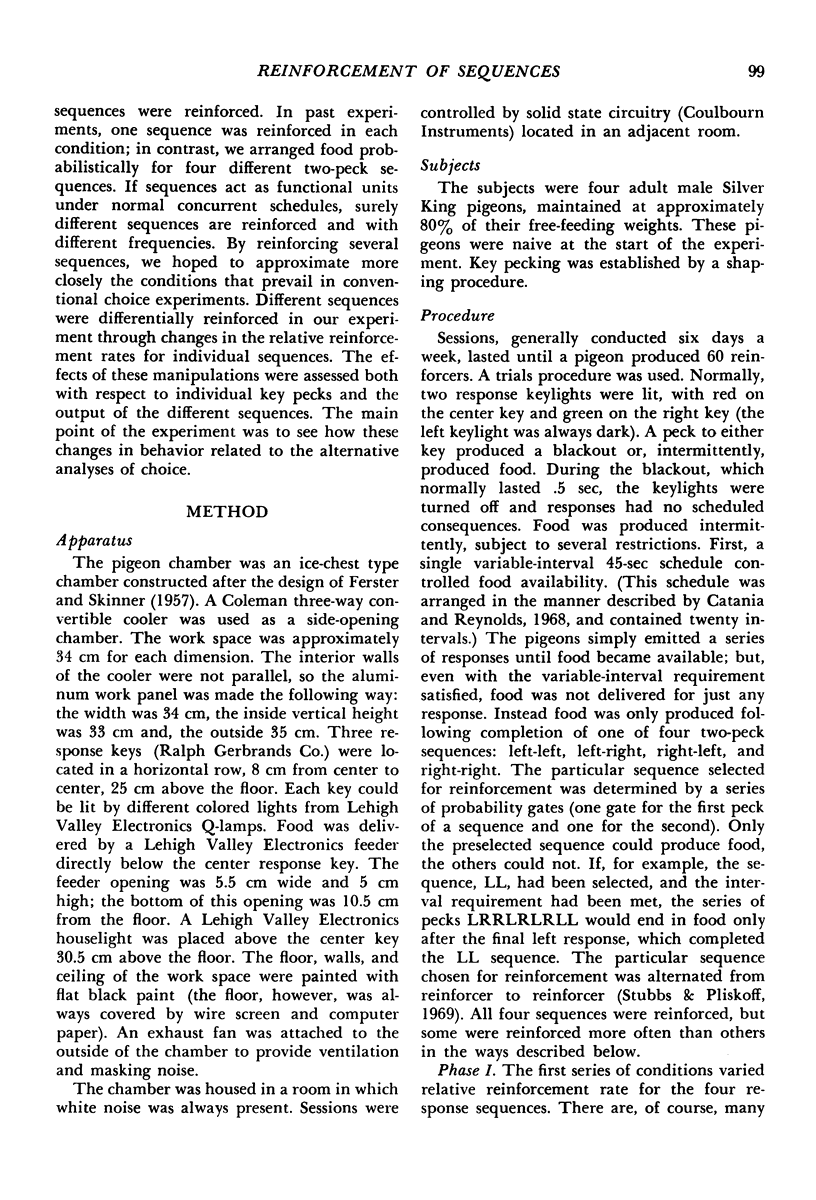
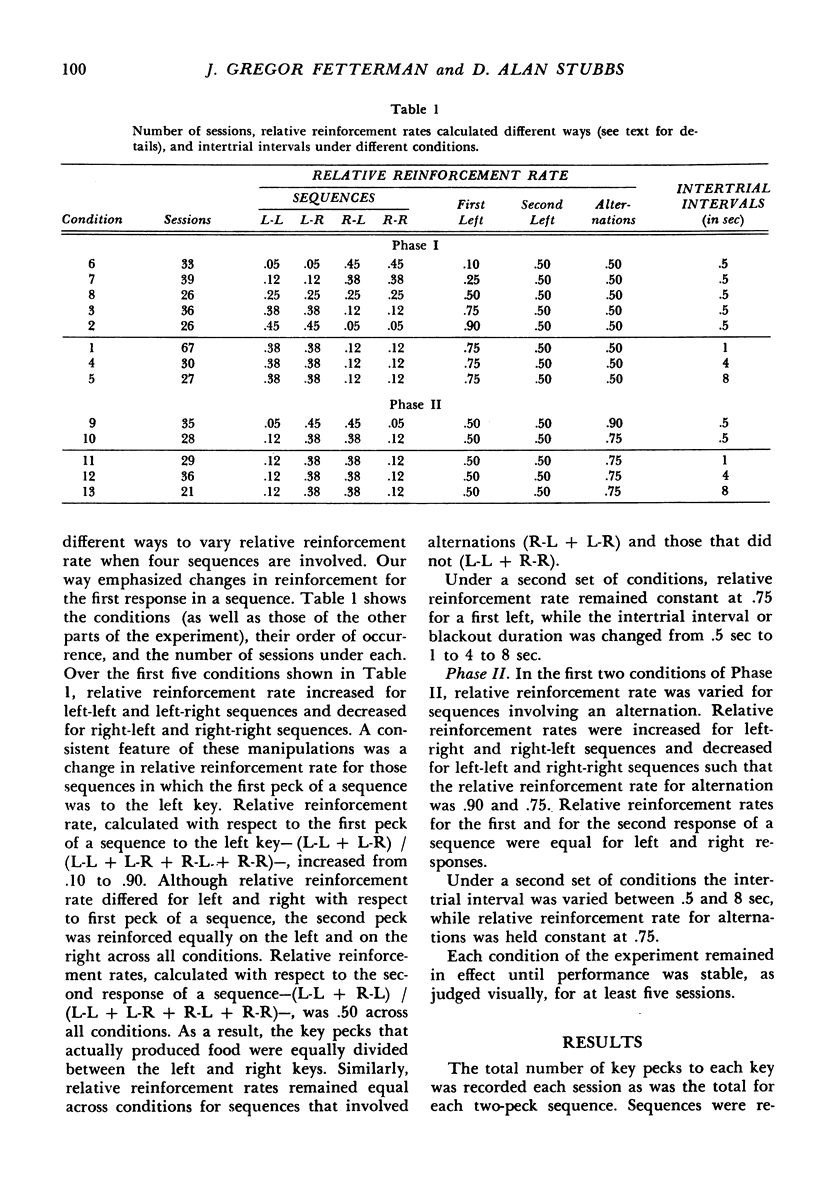
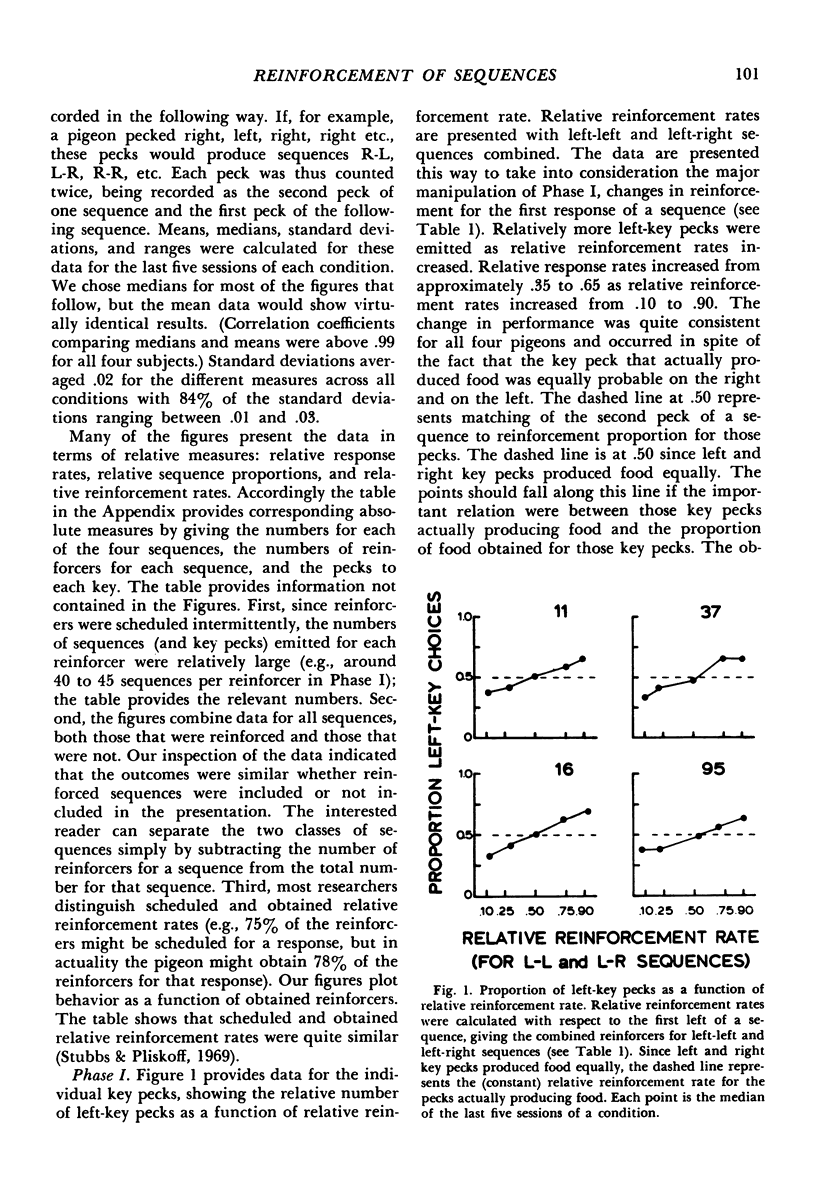
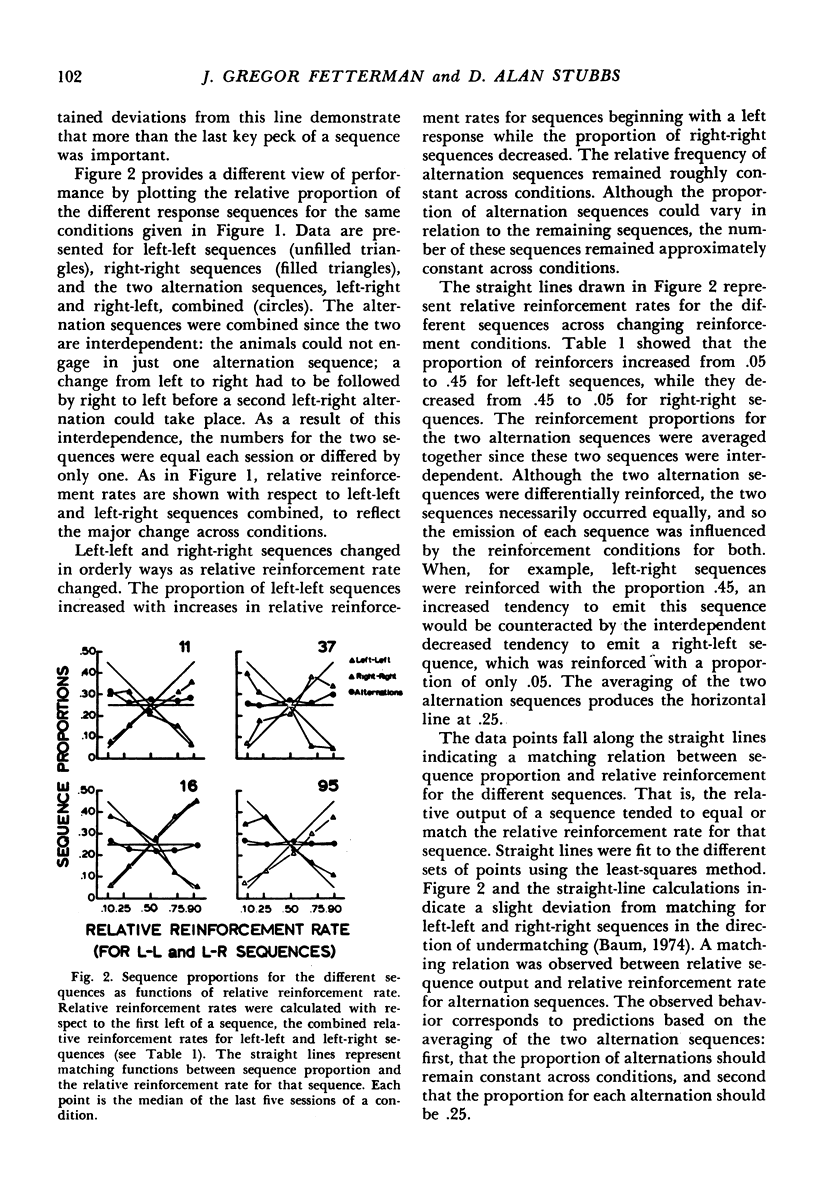
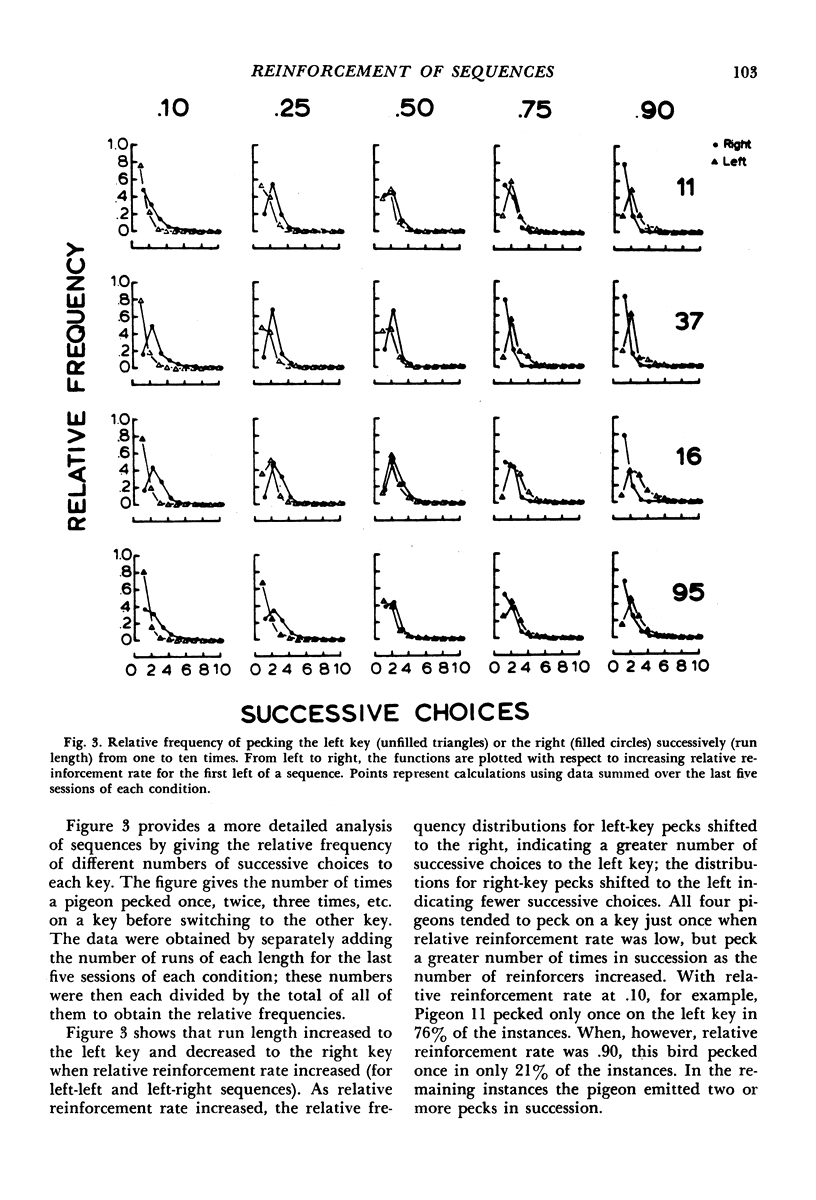
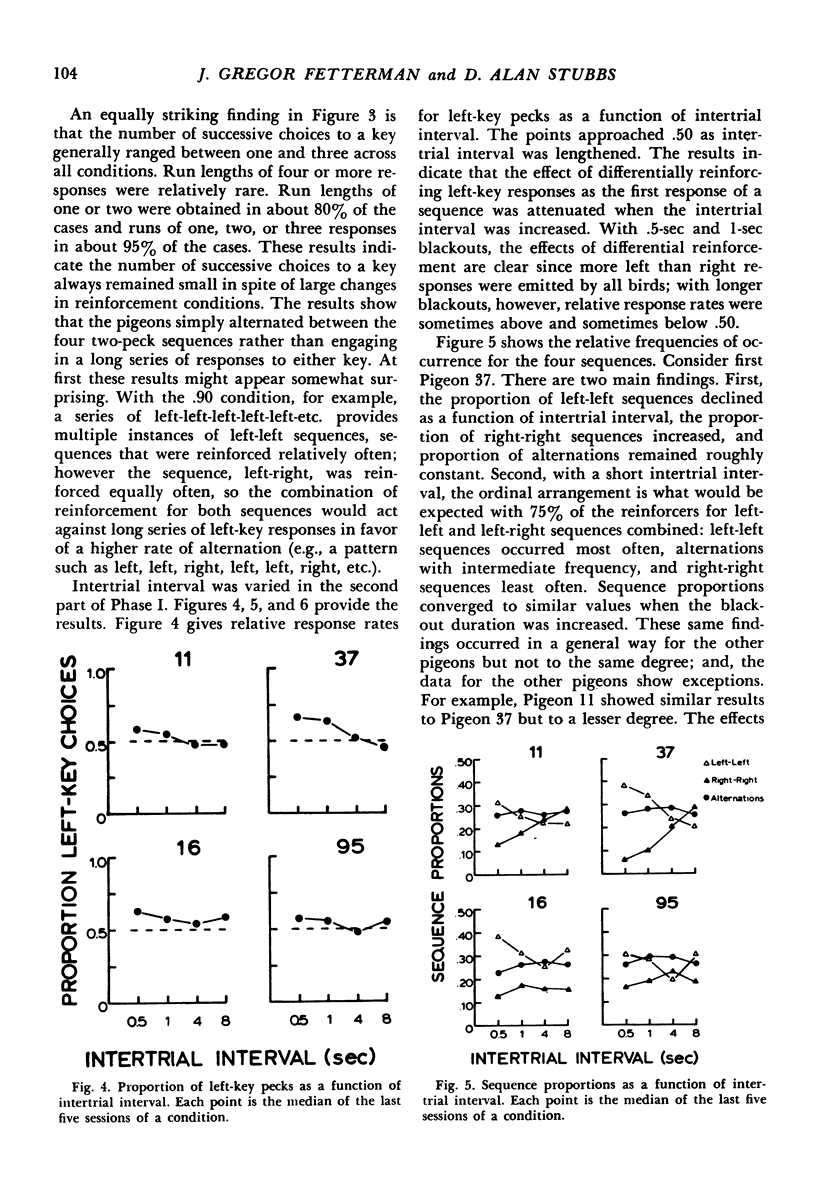
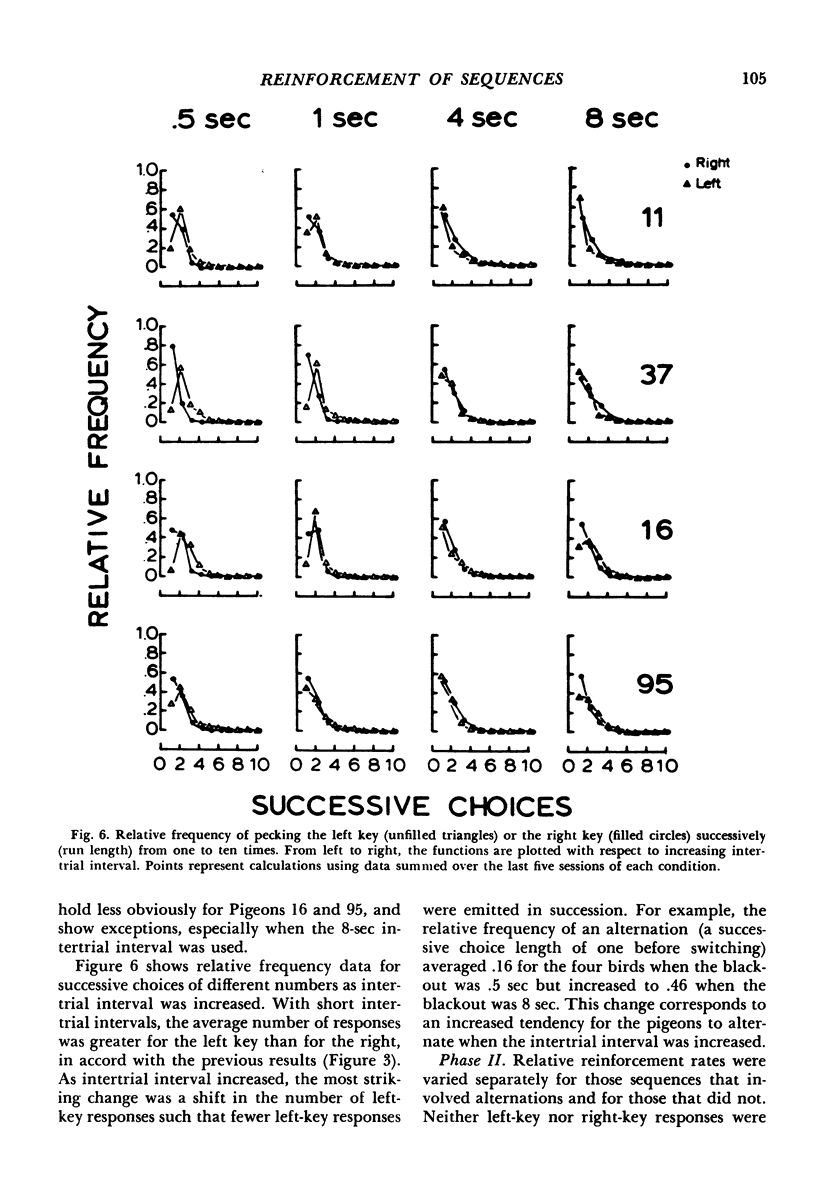
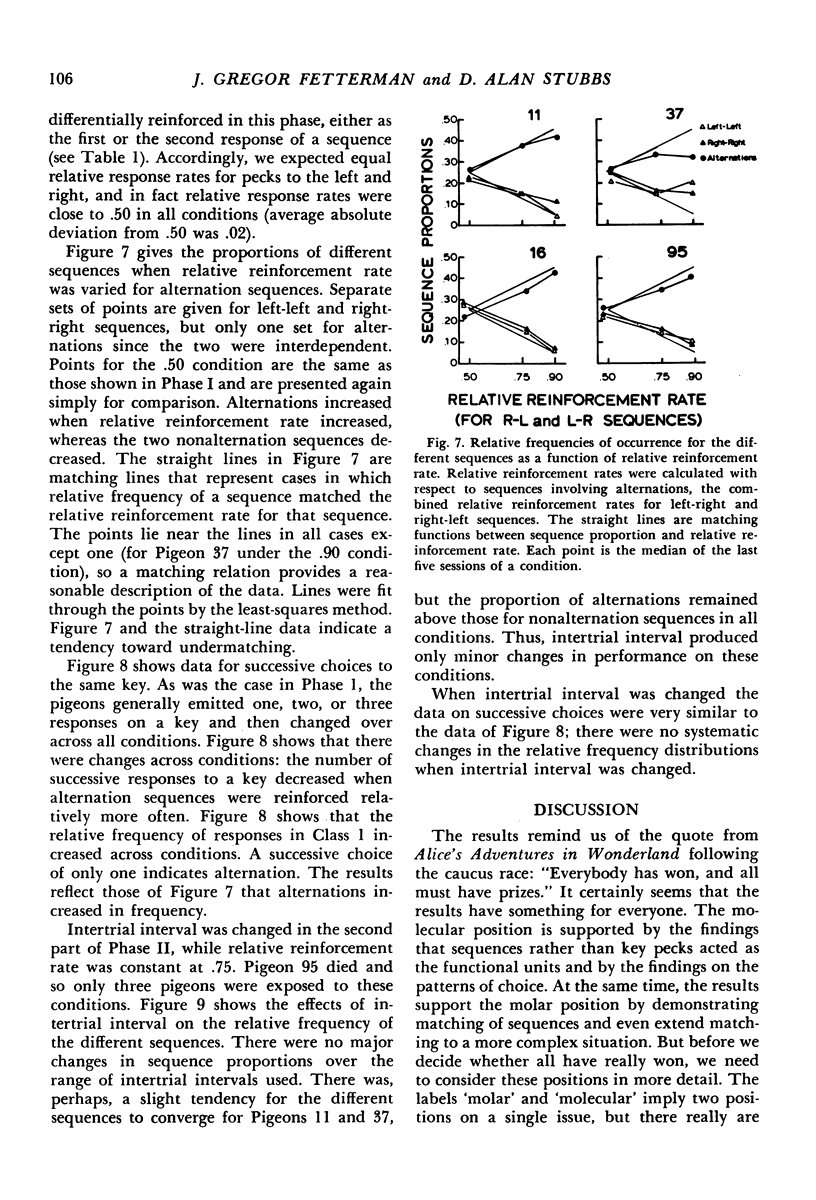
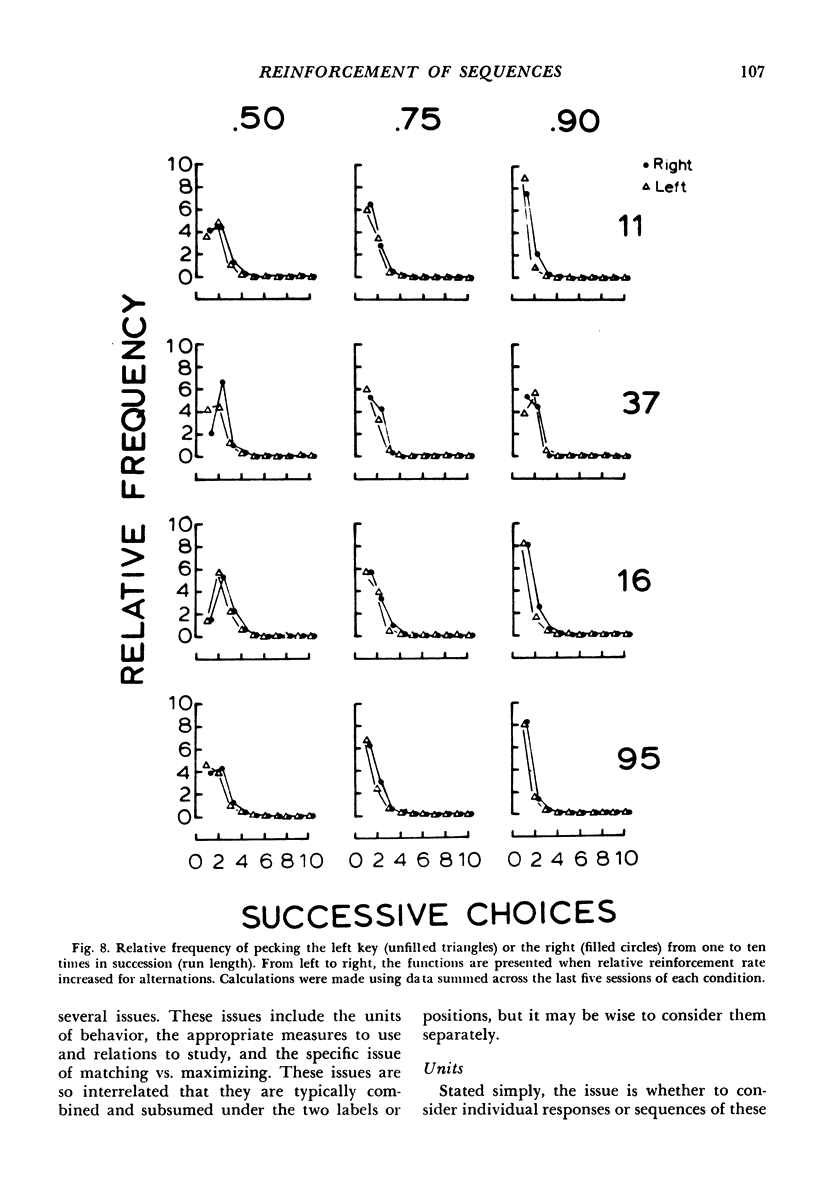
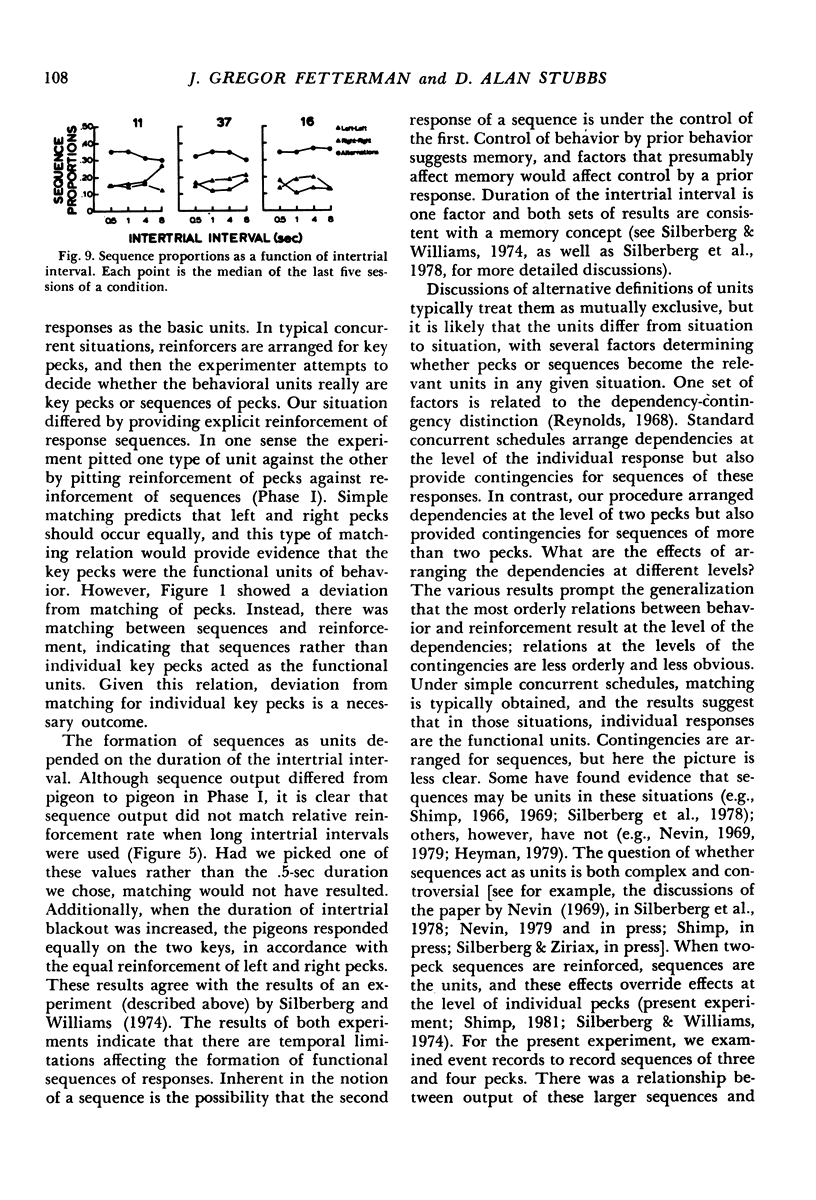
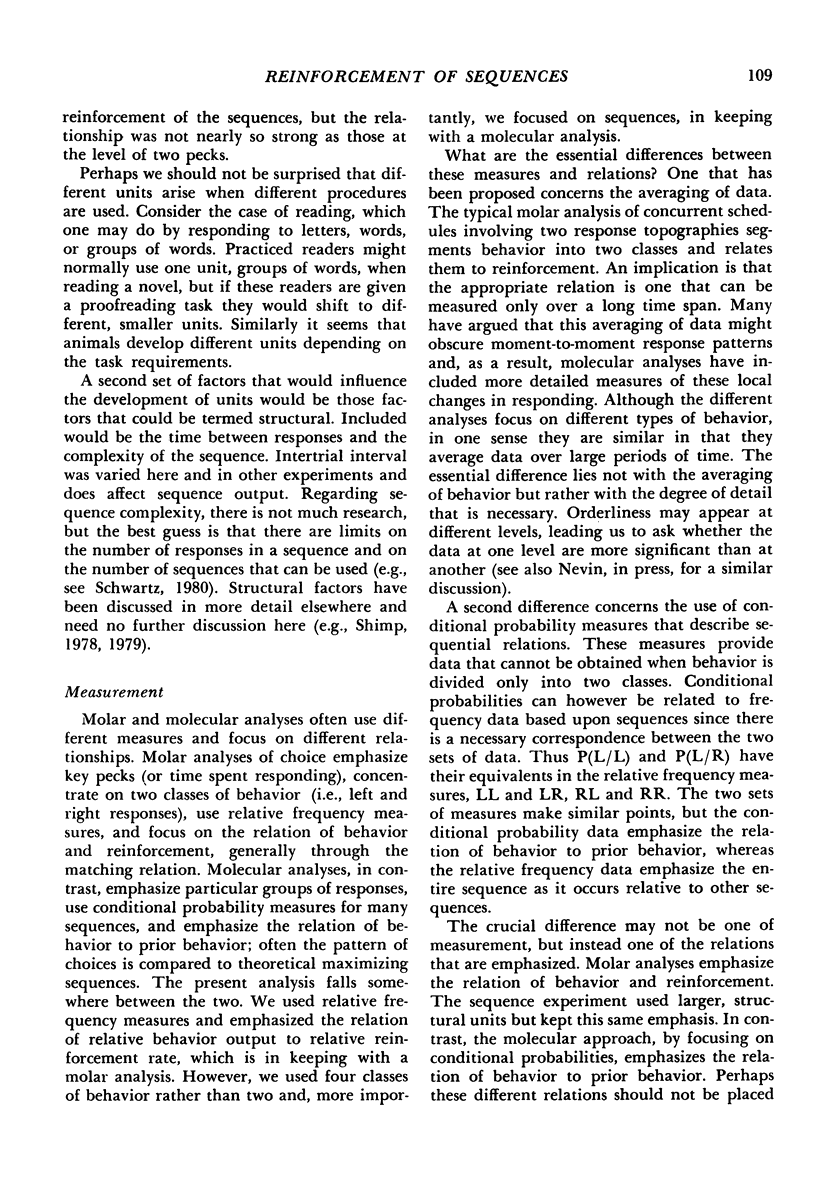
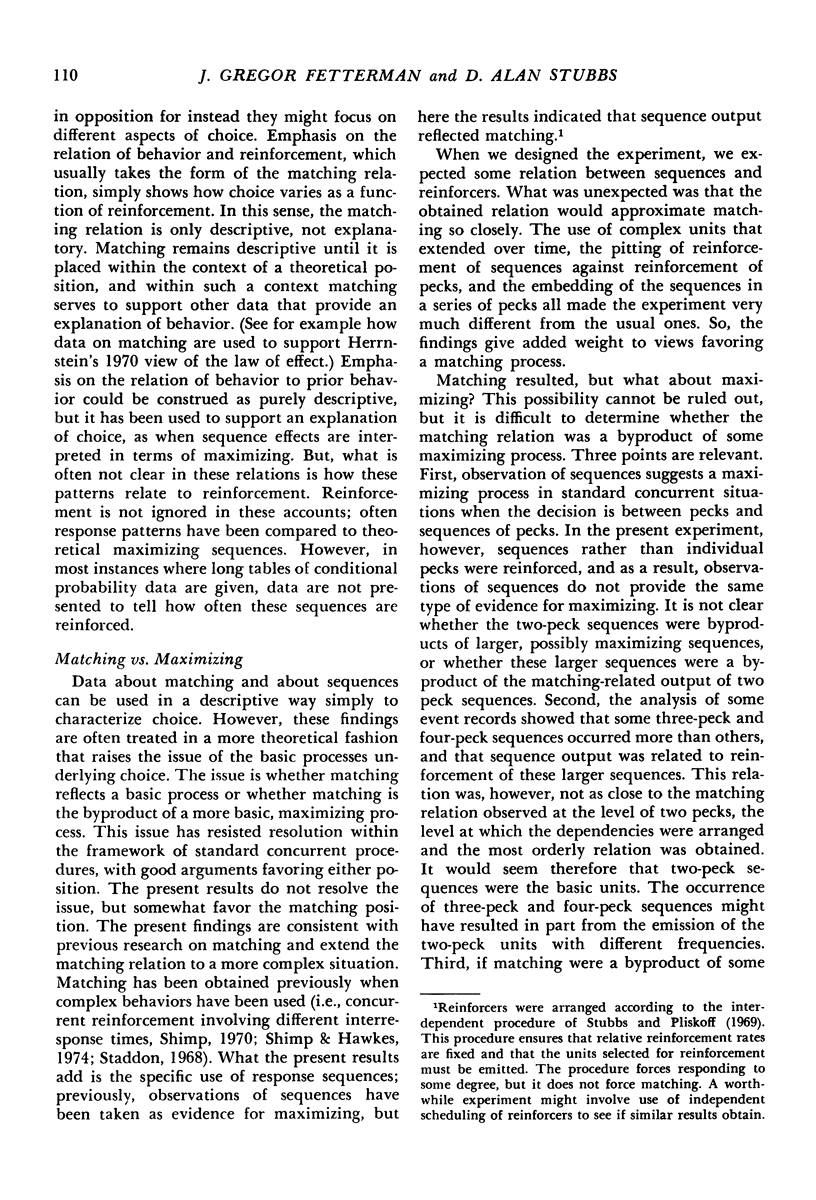
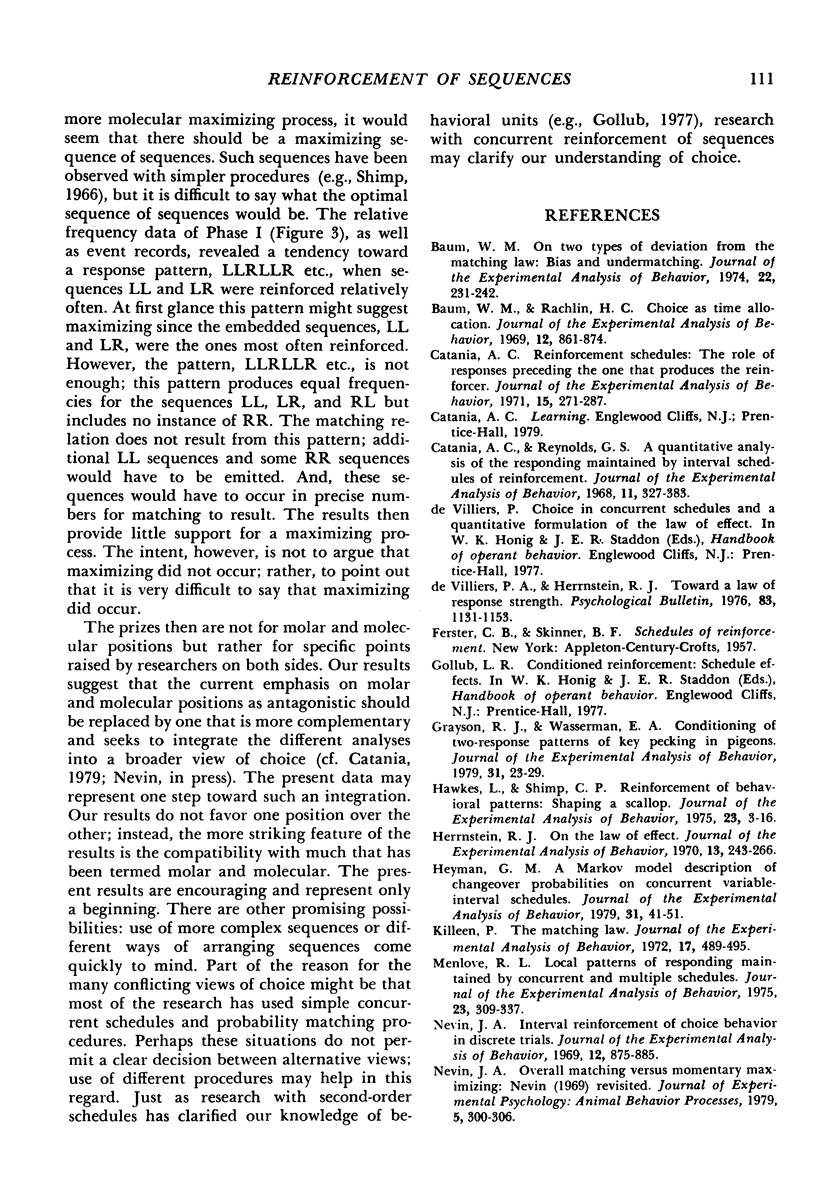
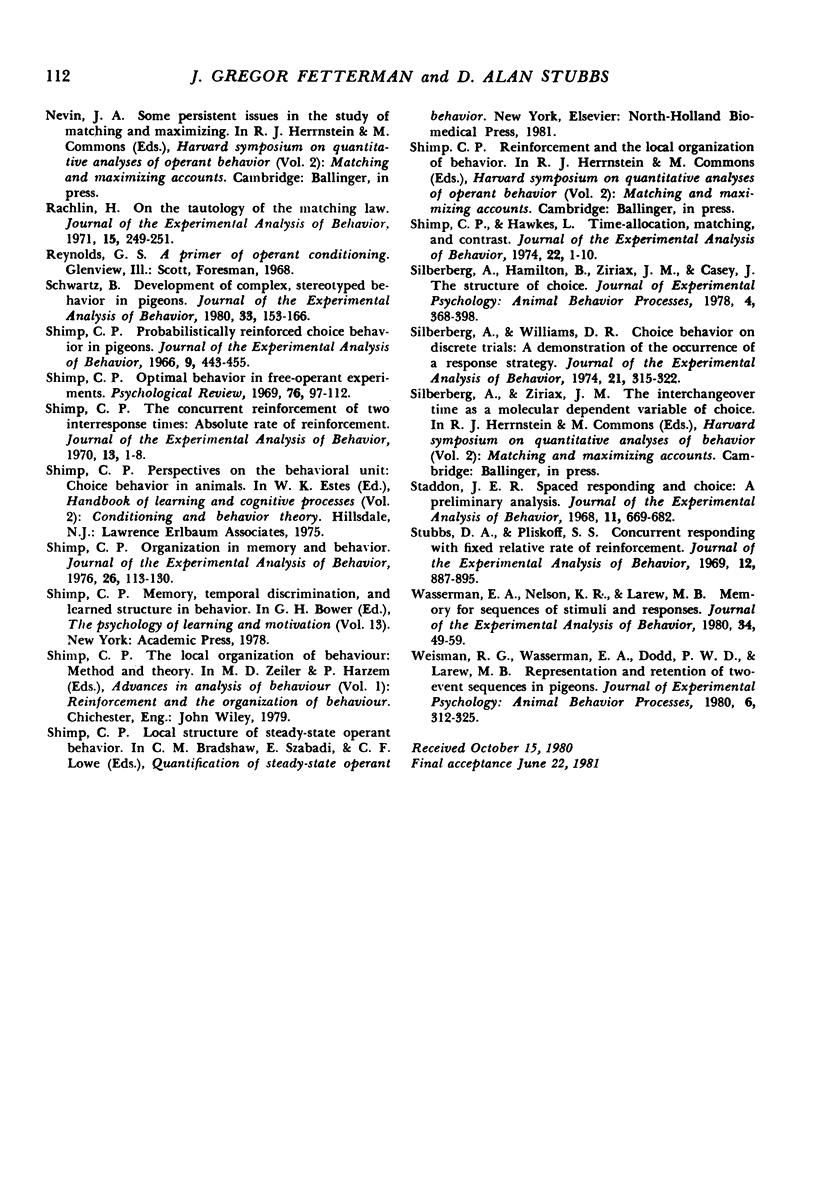
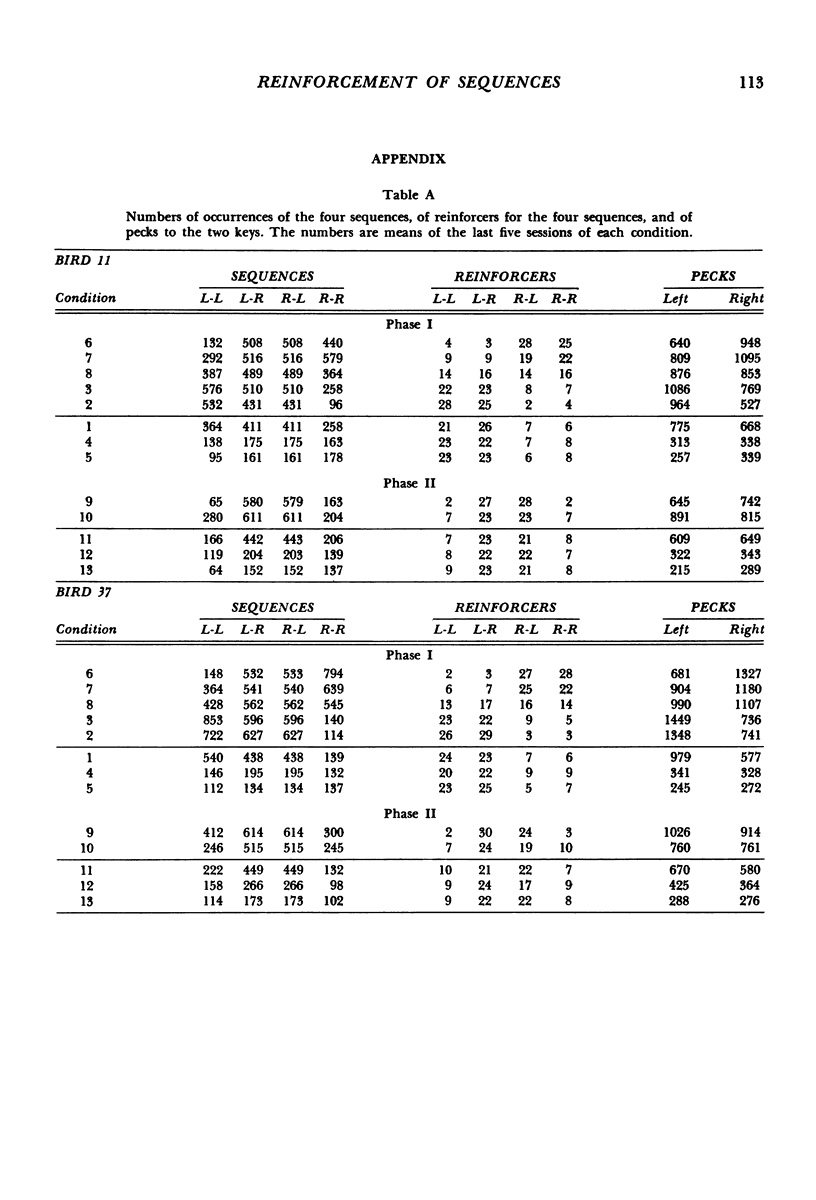
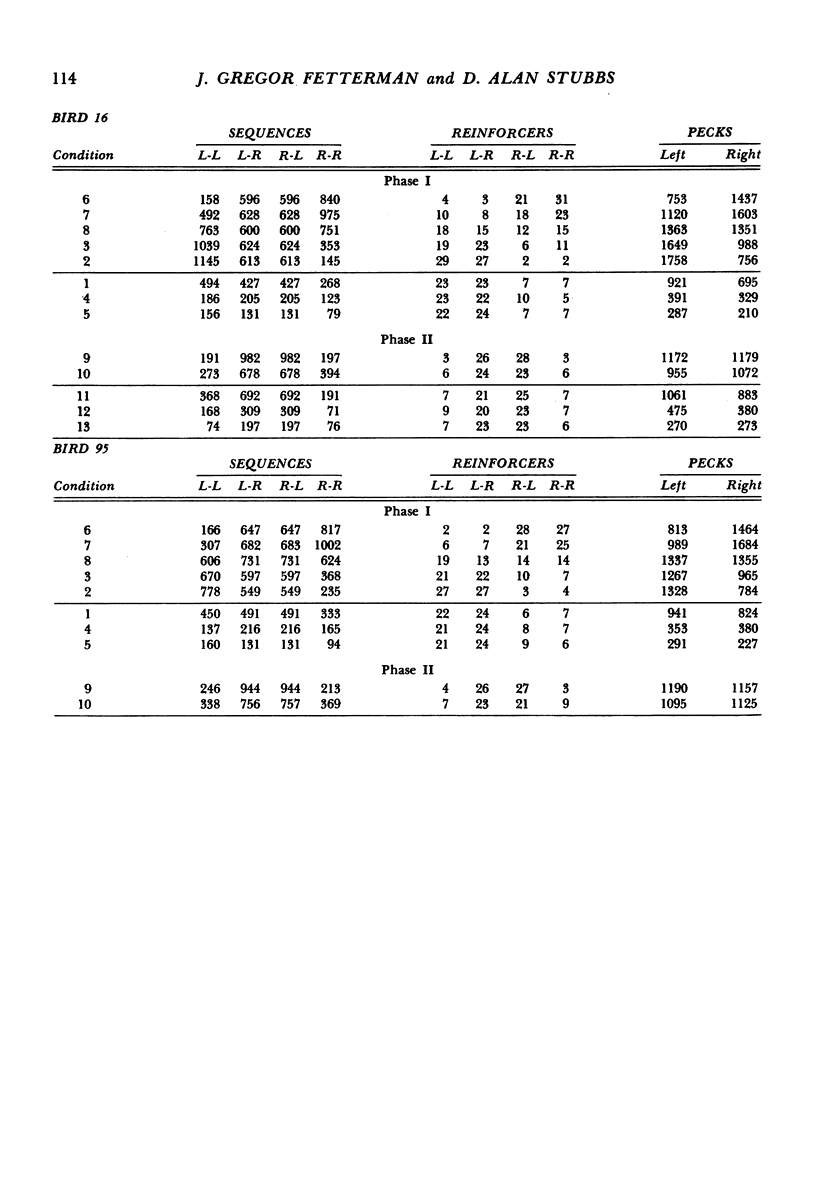
Selected References
These references are in PubMed. This may not be the complete list of references from this article.
- Baum W. M. On two types of deviation from the matching law: bias and undermatching. J Exp Anal Behav. 1974 Jul;22(1):231–242. doi: 10.1901/jeab.1974.22-231. [DOI] [PMC free article] [PubMed] [Google Scholar]
- Baum W. M., Rachlin H. C. Choice as time allocation. J Exp Anal Behav. 1969 Nov;12(6):861–874. doi: 10.1901/jeab.1969.12-861. [DOI] [PMC free article] [PubMed] [Google Scholar]
- Catania A. C. Reinforcement schedules: the role of responses preceding the one that produces the reinforcer. J Exp Anal Behav. 1971 May;15(3):271–287. doi: 10.1901/jeab.1971.15-271. [DOI] [PMC free article] [PubMed] [Google Scholar]
- Catania A. C., Reynolds G. S. A quantitative analysis of the responding maintained by interval schedules of reinforcement. J Exp Anal Behav. 1968 May;11(3 Suppl):327–383. doi: 10.1901/jeab.1968.11-s327. [DOI] [PMC free article] [PubMed] [Google Scholar]
- Grayson R. J., Wasserman E. A. Conditioning of two-response patterns of key pecking in pigeons. J Exp Anal Behav. 1979 Jan;31(1):23–29. doi: 10.1901/jeab.1979.31-23. [DOI] [PMC free article] [PubMed] [Google Scholar]
- Hawkes L., Shimp C. P. Reinforcement of behavioral patterns: shaping a scallop. J Exp Anal Behav. 1975 Jan;23(1):3–16. doi: 10.1901/jeab.1975.23-3. [DOI] [PMC free article] [PubMed] [Google Scholar]
- Herrnstein R. J. On the law of effect. J Exp Anal Behav. 1970 Mar;13(2):243–266. doi: 10.1901/jeab.1970.13-243. [DOI] [PMC free article] [PubMed] [Google Scholar]
- Heyman G. M. A Markov model description of changeover probabilities on concurrent variable-interval schedules. J Exp Anal Behav. 1979 Jan;31(1):41–51. doi: 10.1901/jeab.1979.31-41. [DOI] [PMC free article] [PubMed] [Google Scholar]
- Killeen P. The matching law. J Exp Anal Behav. 1972 May;17(3):489–495. doi: 10.1901/jeab.1972.17-489. [DOI] [PMC free article] [PubMed] [Google Scholar]
- Menlove R. L. Local patterns of responding maintained by concurrent and multiple schedules. J Exp Anal Behav. 1975 May;23(3):309–337. doi: 10.1901/jeab.1975.23-309. [DOI] [PMC free article] [PubMed] [Google Scholar]
- Nevin J. A. Interval reinforcement of choice behavior in discrete trials. J Exp Anal Behav. 1969 Nov;12(6):875–885. doi: 10.1901/jeab.1969.12-875. [DOI] [PMC free article] [PubMed] [Google Scholar]
- Schwartz B. Development of complex, stereotyped behavior in pigeons. J Exp Anal Behav. 1980 Mar;33(2):153–166. doi: 10.1901/jeab.1980.33-153. [DOI] [PMC free article] [PubMed] [Google Scholar]
- Shimp C. P., Hawkes L. Time-allocation, matching, and contrast. J Exp Anal Behav. 1974 Jul;22(1):1–10. doi: 10.1901/jeab.1974.22-1. [DOI] [PMC free article] [PubMed] [Google Scholar]
- Shimp C. P. Organization in memory and behavior. J Exp Anal Behav. 1976 Jul;26(1):113–130. doi: 10.1901/jeab.1976.26-113. [DOI] [PMC free article] [PubMed] [Google Scholar]
- Shimp C. P. Probabilistically reinforced choice behavior in pigeons. J Exp Anal Behav. 1966 Jul;9(4):443–455. doi: 10.1901/jeab.1966.9-443. [DOI] [PMC free article] [PubMed] [Google Scholar]
- Shimp C. P. The concurrent reinforcement of two interresponse times: absolute rate of reinforcement. J Exp Anal Behav. 1970 Jan;13(1):1–8. doi: 10.1901/jeab.1970.13-1. [DOI] [PMC free article] [PubMed] [Google Scholar]
- Silberberg A., Williams D. R. Choice behavior on discrete trials: a demonstration of the occurrence of a response strategy. J Exp Anal Behav. 1974 Mar;21(2):315–322. doi: 10.1901/jeab.1974.21-315. [DOI] [PMC free article] [PubMed] [Google Scholar]
- Staddon J. E. Spaced responding and choice: a preliminary analysis. J Exp Anal Behav. 1968 Nov;11(6):669–682. doi: 10.1901/jeab.1968.11-669. [DOI] [PMC free article] [PubMed] [Google Scholar]
- Stubbs D. A., Pliskoff S. S. Concurrent responding with fixed relative rate of reinforcement. J Exp Anal Behav. 1969 Nov;12(6):887–895. doi: 10.1901/jeab.1969.12-887. [DOI] [PMC free article] [PubMed] [Google Scholar]
- Wasserman E. A., Nelson K. R., Larew M. B. Memory for sequences of stimuli and responses. J Exp Anal Behav. 1980 Jul;34(1):49–59. doi: 10.1901/jeab.1980.34-49. [DOI] [PMC free article] [PubMed] [Google Scholar]


